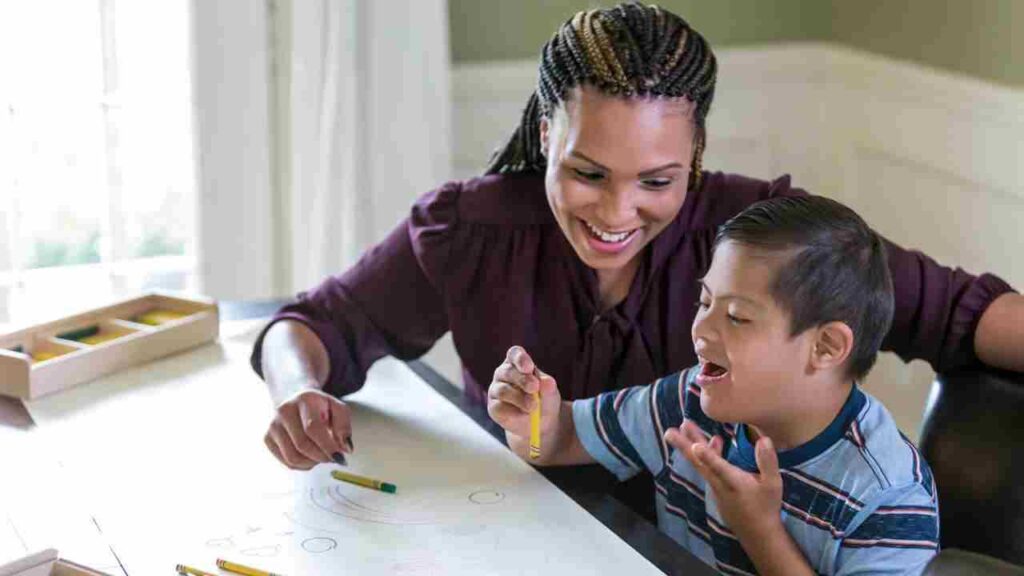In today’s interconnected and diverse world, education plays a pivotal role in shaping a society that values inclusivity and celebrates differences. Embracing diversity in education goes beyond merely recognizing and accepting differences; it involves actively creating an environment that celebrates and supports the unique identities, cultures, backgrounds, and abilities of all learners.
By fostering inclusivity and embracing diversity, we can create educational spaces that empower students, promote equity, and prepare them for a globalized future.
The Power of Diversity in Education

1. Enhancing Learning Opportunities
When students from diverse backgrounds come together in the classroom, they bring a wealth of experiences, perspectives, and knowledge. These diverse perspectives foster critical thinking, creativity, and innovation. Through exposure to different viewpoints and cultural practices, students develop a broader understanding of the world and gain insights that go beyond the confines of their own experiences.
2. Promoting Empathy and Understanding
Education is not only about acquiring academic knowledge but also about developing social and emotional skills. Embracing diversity in the classroom creates opportunities for students to engage with peers from various backgrounds, fostering empathy, respect, and cultural sensitivity. By understanding and appreciating different perspectives, students become global citizens who can navigate and contribute to a diverse society.
3. Building Inclusive Communities
Inclusive educational environments foster a sense of belonging for all students. When students feel valued and respected for who they are, they are more likely to actively engage in their learning and build positive relationships with their peers. Embracing diversity helps create an inclusive community where all students can thrive academically, socially, and emotionally.
4. Preparing for the Globalized World
In a rapidly changing world, where global connections are increasingly important, embracing diversity in education prepares students for future success. By engaging with diverse cultures, languages, and perspectives, students develop the skills needed to navigate multicultural environments, collaborate effectively, and become adaptable problem-solvers.
Read also: Social Science Perspectives on the Autism Spectrum
Strategies for Embracing Diversity in Education
Creating an inclusive and diverse educational environment requires intentional efforts and thoughtful strategies. Here are some strategies that educators and schools can employ to embrace diversity:
1. Curriculum Infusion
Integrate diverse perspectives, histories, and cultural contributions into the curriculum across all subject areas. Include diverse authors, historical figures, and voices from various cultural backgrounds. By doing so, students see themselves reflected in the curriculum and gain a more comprehensive understanding of the world.
2. Culturally Responsive Teaching
Implement culturally responsive teaching practices that acknowledge and validate students’ identities, cultures, and backgrounds. Adapt instructional strategies to meet the diverse needs of learners, utilize culturally relevant materials, and incorporate students’ cultural experiences into the learning process. This approach promotes engagement and empowers students to connect their learning to their own lives.
3. Multilingual Education
Recognize and support the linguistic diversity of students by offering bilingual or multilingual education programs. Providing opportunities for students to maintain and develop their home language not only preserves their cultural heritage but also enhances their cognitive abilities and academic achievement.
4. Professional Development and Training
Equip educators with the necessary knowledge and skills to create inclusive and diverse classrooms. Offer professional development opportunities that address topics such as cultural competence, anti-bias education, and strategies for supporting diverse learners. This ongoing training helps educators develop inclusive teaching practices and effectively address the needs of all students.
5. Diverse Literature and Resources
Ensure that classroom libraries, resources, and learning materials represent diverse cultures, experiences, and identities. Include literature, media, and resources that feature diverse protagonists and reflect the experiences of students from various backgrounds. Providing diverse materials helps students see themselves in the learning materials and promotes empathy and understanding.
6. Collaborative Partnerships
Collaborate with community organizations, parents, and cultural institutions to foster partnerships that support diversity and inclusion. Engage with local communities to create opportunities for students to learn about different cultures, traditions, and histories firsthand. These partnerships strengthen connections between schools and the broader community, enriching the educational experience for students.
Read also: 10 Practices To Address Communication Barriers in the Classroom
Overcoming Challenges and Fostering Change
While embracing diversity in education is crucial, it is not without its challenges. Some common challenges include bias and stereotypes, cultural misunderstandings, and the need for more resources and training. To overcome these challenges and foster meaningful change, it is essential to:
- Foster open dialogue and create safe spaces for discussions about diversity and inclusion.
- Address implicit biases and provide ongoing diversity training for educators and staff.
- Encourage collaboration among students from diverse backgrounds through group projects, cooperative learning, and inclusive extracurricular activities.
- Establish policies and procedures that promote inclusivity, including anti-discrimination policies and bullying prevention measures.
- Seek input from students, parents, and community members to ensure their voices are heard and included in decision-making processes.
Read also: Support Bilingualism in Children with Communication Difficulties
Sustaining and Celebrating Diversity in Education
Embracing diversity in education is not a one-time effort; it requires ongoing commitment and action to create sustainable change. Here are some additional strategies to sustain and celebrate diversity in education:
1. Student Empowerment
Empower students to take an active role in promoting diversity and inclusion. Encourage them to share their experiences, perspectives, and ideas through projects, presentations, and discussions. Provide opportunities for student-led initiatives that celebrate diversity, such as cultural festivals, awareness campaigns, or affinity groups.
2. Parent and Community Engagement
Engage parents and the wider community in supporting diversity initiatives. Host parent workshops on cultural understanding, organize community events that celebrate diversity and invite parents to share their cultural traditions and experiences with students. Building strong connections between the school, families, and the community fosters a collective commitment to diversity and inclusion.
3. Intercultural Competence Development
Promote intercultural competence among students and educators. Offer cross-cultural training and experiences that expose students to different cultures, traditions, and perspectives. Facilitate intercultural exchanges and collaborations with schools from diverse communities or even internationally. By fostering intercultural competence, students develop the skills needed to communicate effectively and respectfully in multicultural settings.
4. Diverse Hiring and Professional Development
Ensure diversity is reflected among the teaching staff and administrators. Actively recruit educators from diverse backgrounds and provide professional development opportunities that address cultural competence, implicit bias, and inclusive teaching practices. Having a diverse teaching staff enhances cultural representation and allows students to connect with role models who share their backgrounds.
5. Data Collection and Analysis
Collect and analyze data on student performance, discipline, and participation rates disaggregated by various dimensions of diversity. This data provides insights into areas where inequities may exist and allows for targeted interventions and improvements. Regularly review and assess the impact of diversity initiatives to ensure their effectiveness and identify areas for growth.
6. Celebrating Diversity Year-Round
While special events and heritage months provide valuable opportunities to celebrate diversity, it is important to integrate diversity into the fabric of daily school life. Incorporate diverse perspectives and cultures throughout the year, integrating diverse literature, music, art, and history into the curriculum. By weaving diversity into the daily educational experience, we foster an inclusive environment where students feel valued and celebrated every day.
The Long-Term Benefits of Embracing Diversity
Embracing diversity in education has long-term benefits that extend beyond the classroom. When students grow up in diverse and inclusive environments, they develop a mindset of empathy, respect, and appreciation for diversity. These qualities enable them to contribute positively to the workplace, their communities, and society at large.
Furthermore, embracing diversity prepares students to navigate an increasingly interconnected world. In an era of globalization, where interactions with people from different cultures and backgrounds are commonplace, individuals with a strong foundation in diversity and inclusion are better equipped to navigate cultural nuances, collaborate across boundaries, and contribute to a more harmonious and equitable world.
Conclusion
Embracing diversity in education is both a moral imperative and a strategic investment in our collective future. By actively fostering inclusivity, promoting cultural understanding, and celebrating the unique identities of all students, we create learning environments that empower and uplift. Embracing diversity prepares students to thrive in an interconnected world and equips them with the skills and mindset needed to build inclusive communities. As educators, administrators, and stakeholders, let us stand together in our commitment to embracing diversity, fostering inclusion, and nurturing the potential of every learner. Through our collective efforts, we can create a brighter and more equitable future for all.






